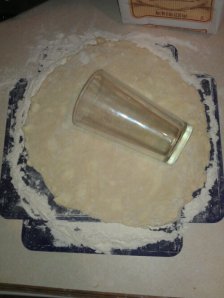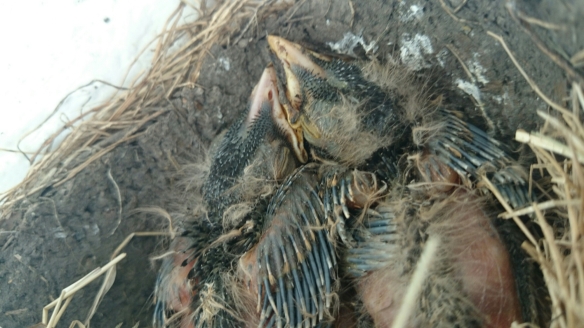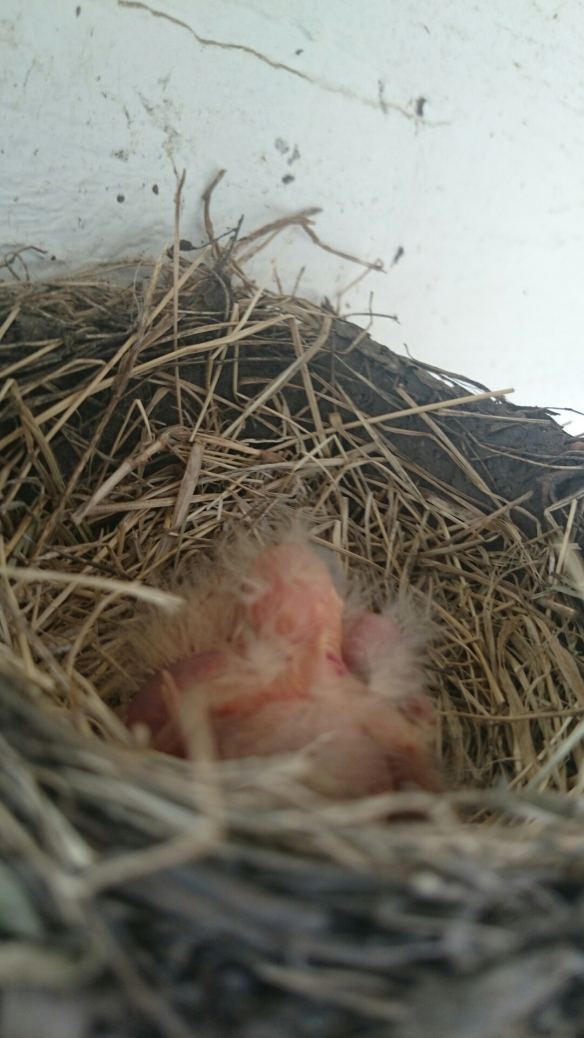Pie is an excellent way to bribe/thank people. It’s delicious, homey, and pretty much everyone likes it. And while store-bought pies are rather…..meh (with a few exceptions), homemade pie are pretty darn wonderful. However there is a problem: the crust.
I really enjoy double-crusted pie (three-berry pie is a favorite of Kyle, who is usually the person that I am bribing/thanking because he owns every useful tool that I need to borrow AND has a truck). However, that means there is TWICE as much crust to roll out. And while I do use store-bought crusts from time to time, if I’m going to make someone a homemade pie, it will be completely homemade. But making pie crusts has left me in tears on a bad day and on a good day…well….. there’s usually an extra glass of wine involved.
But this past weekend, procrastination saved the day!
I reread SmittenKitchen’s post on pie crust. And while I thought I had been following it pretty well, my results were not good. But I decided to try, try again. I did make a few changes. First, I chilled my dough on the top shelf of the fridge (where it is coolest) to the point that I could see tiny ice crystals. (This is where the procrastination came in. I was NOT looking forward to rolling out the dough, so instead of chilling one hour, the dough chilled about four hours.) Next, I learned that far too much flour is just enough. I always feel like I’m going to mess up the composition of the dough by using so much flour, but that really only applies to mixing, not to rolling out.
Finally, my favorite cheats: a beer glass and silicon mats. 
My rolling pin had a flaw in the wood that caused everything to stick. I threw it out but neglected to get another one. So I used a beer glass instead and I’ve decided that I really don’t want to use anything else. The glass is smooth and, if I’m paying attention, I can catch the dough sticking long before I end up tearing the whole lot. (Generously powdering the dough with flour prevents almost all sticking.) The curve of the glass makes it much easier to roll out dough in the shape that you desire. Plus, if the dough cracks near the edge, you can roll the glass in a way that encourages the dough to go back together.
Next, silicon mats. Years ago, my friend Shawn (who is a wonderful baker) gave me some silicone bake wear. After getting over my initial “Huh? But…it’s….squishy!,” I found that I enjoyed using it. After much frustration with pie crust stuck to the counter, a light-bulb went off and I dug the mats out of the cupboard. Instead of trying to pick up the crust, it’s much easier to just slide my hands under the mats and then move the crust to the pan. Even if the crust sticks, I can slowly peel the mat away and prevent tears. Huzzah!
At the end of the project, I had two pies (though one was slightly over-baked, but don’t worry, Kyle got the good one) and I still had enough sanity/patience/whatever to make eggplant soup.  I made a veggie version, using vegetable broth instead of chicken broth and it was just as good, if not better. It’s not hard to leave out the cream if you want a vegan version (which is also tasty). I’m also very bad about using up garlic cloves so I’ve switch to using the ginormous jar ‘o chopped up garlic from Costco. Instead of roasting a head of garlic, I make a little tinfoil cup, spoon in a bunch of garlic, drizzle the top with olive oil and roast away. The consistency is a bit different, but taste is just the same. Finally, I refuse move soup to a blender only to put it back in the pot. It’s messy and I mostly end up burning myself. So I got rid of the traditional blender and use a stick blender instead. Much, much easier. And while I don’t really like anything that smacks of gadget in the kitchen, between making soup and jam, the stick blender has earned it’s place.
I made a veggie version, using vegetable broth instead of chicken broth and it was just as good, if not better. It’s not hard to leave out the cream if you want a vegan version (which is also tasty). I’m also very bad about using up garlic cloves so I’ve switch to using the ginormous jar ‘o chopped up garlic from Costco. Instead of roasting a head of garlic, I make a little tinfoil cup, spoon in a bunch of garlic, drizzle the top with olive oil and roast away. The consistency is a bit different, but taste is just the same. Finally, I refuse move soup to a blender only to put it back in the pot. It’s messy and I mostly end up burning myself. So I got rid of the traditional blender and use a stick blender instead. Much, much easier. And while I don’t really like anything that smacks of gadget in the kitchen, between making soup and jam, the stick blender has earned it’s place.








